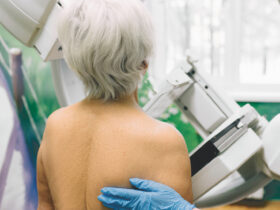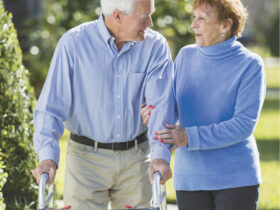By Shannon Willits, Master Pilates Educator
Nearly 300,000 women in the U.S. are diagnosed with breast cancer each year. For them, survival marks the beginning of a new journey.
One that is deeply personal, often misunderstood, and rarely linear. Long after treatments end, the body holds on. To fatigue. To scar tissue. To stiffness. To fear.
The aftermath of surgery, chemotherapy, radiation, or reconstruction can linger silently. Muscles weaken. Breath shortens. Movement feels foreign. While oncology teams often focus on survival, few offer full-body strategies for restoration.
That’s where Pilates becomes more than just exercise. It becomes a bridge. A reconnection. A way back into the body.
The Disconnection No One Talks About
Breast cancer doesn’t just affect cells. It fractures identity. For many survivors, there is a profound disconnect between how the body feels and how it once functioned. Mastectomies, drains, expanders, scar tissue, and nerve damage can make everyday movements feel unsafe. Or impossible.
Physical therapy may address acute healing. But what comes after? How does a woman regain trust in her body? Where does she go when she’s cleared for exercise but feels far from whole?
Pilates answers that question. Gently. Intelligently. With precision.
A Method Designed for Recovery
Created by Joseph Pilates for rehabilitation, the method emphasizes controlled movement, proper alignment, and deep breathing. It meets people where they are. For breast cancer survivors, this is critical.
Each session can be tailored. Modifications are not only welcome, they are expected. A good Pilates instructor sees the whole person. Not just the range of motion. Not just the scar.
Sessions begin with breath. That breath invites safety into the nervous system. It reduces tension. It signals that healing is possible. Then, small movements reawaken dormant muscles. Slowly, confidence builds and stability returns.
The goal isn’t to “bounce back.” It’s to rebuild with care and precision.
Why Rotation and Circulation Matter Most
One of the most overlooked pieces of recovery is lymphatic health. The lymphatic system doesn’t have a pump like the heart. It depends on movement, breath, and muscle activation to function properly.
After surgery or radiation, lymph flow can be restricted. Swelling and lymphedema become a real risk. That’s why movement is essential. But not just any movement.
Pilates prioritizes rotation. Twisting motions, gentle spirals, and multi-directional exercises stimulate lymph flow. These movements are often missing from other exercise programs. But they are vital for flushing inflammation and clearing stagnation.
Spinal rotation. Arm arcs. Rib cage mobility. These aren’t just Pilates exercises. They are lifelines for the lymphatic system.
Scar Tissue, Fascia, and the Forgotten Web
Every surgery leaves a mark not just on the skin, but in the connective tissue beneath. Fascia, the web-like tissue surrounding muscles and organs, can tighten, clump, and restrict motion, especially after breast surgery.
Traditional stretching can be aggressive. Pilates offers something more profound. Small, slow, spiraled movements that hydrate and mobilize the fascial layers. Over time, these movements soften restrictions. They create space. They restore flow.
As fascia begins to release, pain often decreases. Range improves. Women feel more like themselves again.
It’s Not Just Physical
The emotional toll of breast cancer is profound. Anxiety. Depression. Grief. Pilates helps here, too.
Movement becomes meditation. Breath becomes the anchor. In a quiet studio, without judgment, something shifts. For many survivors, Pilates is the first time they feel calm in their bodies again.
That calm matters. Stress impacts immune function, hormone regulation, and healing. A movement practice that lowers cortisol, improves sleep, and restores agency is not optional. It’s necessary.
Science Is Catching Up
Multiple studies now validate what Pilates professionals have seen for years. A 2020 meta-analysis in the Journal of Clinical Medicine showed significant improvement in upper limb function, fatigue, and quality of life for breast cancer patients practicing Pilates. Another study in Supportive Care in Cancer found that twice-weekly sessions improved body image, sleep, and emotional well-being.
But the research only tells part of the story.
What can’t be measured is the smile when a woman lifts her arms overhead for the first time in months. Or the moment she realizes she’s breathing fully, deeply, again. Or when she reclaims the word “strong.”
Healing in Layers
For Jennifer Yozzo, an occupational therapist and Pilates instructor, recovery came in layers. Post-mastectomy pain, scar tissue, fatigue, and the guarded posture that follows cancer treatment all demanded patience, persistence, and self-grace.
“From diagnosis to surgery to extended treatments and additional surgery, it felt like my body was just surviving, not thriving. Pain and doubt took over. Until I found Pilates, I struggled.”
Pilates offered her not just strength, but a way to rewrite her relationship with her body.
“I learned that scar tissue and guarding had limited my breathing. Pilates breath gave me full expansion of my chest wall, and focusing on breath as I stretched into difficult ranges helped me regain strength and length. I can now reach my arms overhead without pain or tension. My neck and back pain have shifted from constant to occasional. I can lift and move in ways I thought were no longer possible. My shoulders no longer slump forward, and I stand tall, proud of the work I’ve done to recover.
My journey isn’t over. I look forward to continuing Pilates not only for myself but for others who may need the same care of self,” Jennifer says.
Breathwork steadied her nervous system, journaling gave her clarity, and movement restored trust. Group classes offered community, while private sessions addressed delicate limitations. What began as survival transformed into confidence, with Pilates the foundation for strength, resilience, and a renewed sense of self.
As her practice deepened, Jennifer saw healing not as linear but as a dialogue between effort and grace. Recovery grew into passion. Having experienced how Pilates teaches the body to be heard, trusted, and supported through every stage of healing, Jennifer advanced her study to become an instructor, committed to guiding others on the path of renewal.
Pilates Is the New Standard of Care
Survivorship deserves more than maintenance. It deserves momentum. Pilates offers that. Not through intensity. But through intention.
It invites women to move again. To rotate. To breathe. To feel. To reconnect.
And in that reconnection, healing becomes possible. Not just physically. But emotionally. Spiritually. Wholly.
Shannon Willits is a Master Pilates Educator with more than 20 years of experience in functional movement and athletic performance. She is STOTT-certified, a Fellow of Applied Functional Science (FAFS), and a Functional Golf Specialist, bringing expertise in both rehabilitation and sport-specific training.
As the owner of four Club Pilates studios in Lee County, FL, Shannon trains and mentors aspiring instructors through her Southwest Florida Pilates Academy and innovative apprenticeship model. She is also the host of the Alignment Matterspodcast, where she shares insights on Pilates, movement science, and wellness—helping others make some of the wisest health decisions of their lives.









